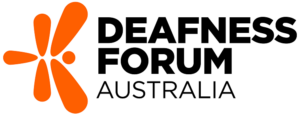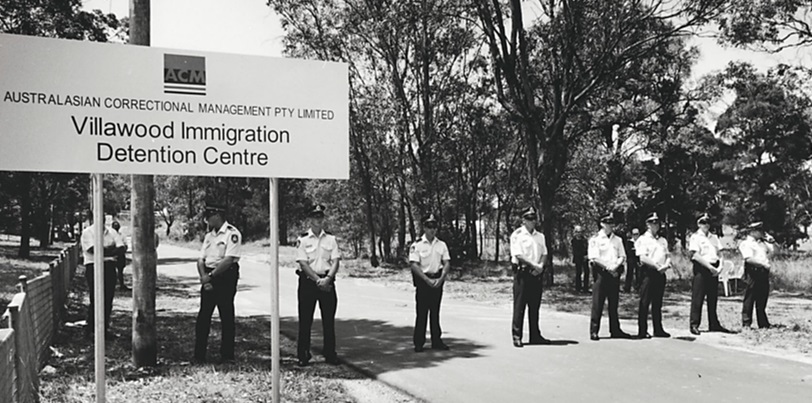Culturally and Linguistically Diverse Communities’ Journey in Accessing Hearing Services in Australia. 


Foreword.
In producing this paper, our primary aim was to highlight the pressing concern of inadequate hearing healthcare access for people from culturally and linguistically diverse (CALD) backgrounds. Its author, Emily Shepard examined existing research and condensed these findings into accessible language. We hope that this paper will foster enhanced awareness of these issues, spark meaningful dialogue and further research and collaborations in the field. We intend to offer clear recommendations to policymakers, disability service providers, hearing healthcare practitioners, and community program managers.
CALD is a term widely utilised in Australia, particularly in Government, to denote individuals who have cultural backgrounds different from the general population.
Deafness Forum Australia.
We are the peak national body representing the views and interests of the more than 4 million Australians who live with hearing difficulties, have ear or balance disorders, people who communicate using Australian Sign Language, and their families and supporters. Our purpose is to support Australians to live well in the community by making hearing health & wellbeing a national priority.
www.deafnessforum.org.au
©Deafness Forum Australia, Nov 2023.
Introduction.
Australia is a culturally and linguistically diverse nation with one-third of the population born overseas. Half of the population has at least one parent who was born overseas, and one in five people communicate in languages other than English at home (Australian Bureau of Statistics, 2022).
CALD individuals and communities represent a wide range of linguistic and cultural backgrounds. With a growing CALD population in Australia, health services must acknowledge and accommodate this diversity and respond to the cultural needs of communities. However, CALD people continue to face distinct challenges, social disadvantage (Khatri & Assefa, 2022) and experience high rates of disparities and inequitable health outcomes compared to other Australians (Australian Institute of Health and Welfare, 2022).
Many people from CALD communities have poor health literacy and experience difficulties navigating the Australian health system. Coupled with lower awareness of health services compared to other Australians, people from CALD backgrounds face a multitude of barriers to accessing health services (Adhikari et al., 2021).
When it comes to accessing essential audiological healthcare services, people from CALD communities are at a distinct disadvantage. Challenges such as language barriers, working with interpreters, stigma and shame about hearing loss, cultural barriers and difficulties accessing information are all too common for people from CALD communities.
With the Government’s Hearing Services Program and National Disability Insurance Scheme both reporting significant underutilisation by CALD populations, it is essential to gain a better understanding of the complex and multi-faceted barriers faced by CALD communities to develop strategies for improving and fostering inclusive and equitable hearing healthcare.
Current hearing health research for CALD communities in Australia.
Inequalities in hearing health undermine health and wellbeing, work opportunities and sustainable and cohesive communities.
Professor Piers Dawes from The University of Queensland leads a project aimed at helping improve access to the Australian Government Hearing Services Program for people from CALD backgrounds, with statistics showing this population is more likely to experience hearing loss and less likely to access hearing services.
He notes that congenital hearing loss is up to three times higher among Australians born in regions such as Africa and the Middle East compared to those born in Australia.
Professor Dawes’ research project was awarded a National Health & Medical Research Council grant for targeted hearing research. It is being conducted in collaboration with people from CALD backgrounds, hearing healthcare providers and a range of community and consumer representative organisations. The research aims to understand the barriers and facilitators to access hearing health care and to co-develop public health strategies to redress hearing health inequalities currently impacting CALD communities.
“We are working to develop effective, equitable and sustainable solutions so that everyone can achieve their goals in life without being limited by hearing loss,” Professor Dawes said.
Understanding international evidence in an Australian context.
In collaboration with Dr Dawes, Mitch Thornton from the University of Queensland has established a scoping review protocol to describe the evidence relating to hearing health among immigrants in Australia. This research acknowledges that evidence from other countries shows some CALD communities may experience a higher prevalence of hearing loss compared to the general population (Dawes et al., 2014) and aims to better understand the evidence in an Australian context.
* This report by Deafness Forum Australia will be updated once the findings from the University of Queensland research projects are published in coming months.
Challenges in the clinic.
Dr. Zheng Yen Ng and a team of researchers at The University of Queensland conducted a study on the challenges faced by clinicians in providing hearing healthcare to culturally and linguistically diverse (CALD) families with young children experiencing hearing loss. The study identified several challenges, including the complexity of involving interpreters in appointments. Live translation extended appointment times, leading to reduced information delivery to CALD families in fixed time appointments. Building relationships through developing empathy and rapport-building with these families was made difficult by language barriers (Ng et al., 2022).
To overcome these challenges, clinicians employed a mix of strategies, such as using simplified English and learning basic phrases in the family’s native language for initial interactions. Many clinicians also sought additional training and information on language and cultural differences, multilingual development, and effective interpreter collaboration. Additionally, clinicians proposed solutions like using adapted and informal assessments, increasing the availability of translated materials, and expanding non-English assessments, along with offering more training opportunities.
Enhancing the accessibility and utilisation of the Hearing Services Program.
In 2022, the Department of Health and Aged Care commissioned a project titled “Optimising Hearing Health and the Hearing Services Program for CALD populations”. It was led by Dr Lourdes Zamanillo at Soundfair, with the primary objective of gaining insights into the experiences of CALD communities regarding hearing services in Australia. It further sought to formulate recommendations aimed at enhancing the accessibility and utilisation of these services, with a specific emphasis on the Australian Government Hearing Services Program.
The findings revealed several barriers to accessing hearing services. Barriers encompassed a lack of awareness among CALD communities about the Australian healthcare system and the availability of services. Additionally, language barriers, including the limited availability of interpreters and translated materials, posed significant challenges. Moreover, the project identified a deficiency in cultural competency among healthcare providers, hindering their ability to effectively address cultural barriers. The presence of a language barrier made expressing empathy and picking up on social and emotional cues more challenging, which in turn made it harder to build rapport and trust with CALD patients.

Barriers to equitable access to health services and effective service provision.
Language: One of the most prominent challenges faced by people from CALD communities when accessing hearing services is the language barrier (White et al., 2019). They may have limited proficiency in English, making it difficult to communicate their hearing issues and understand their treatment options as well as creating difficulties in understanding resources and communicating their needs to healthcare professionals (Lakin & Kane, 2023). There may be cultural differences in norms, values and customs that make it difficult to access culturally appropriate information and support (Wali & Renzaho, 2018). Also, the lack of accessible information in languages other than English often leaves individuals uninformed about available resources, diagnosis procedures, and treatment options, ultimately hindering their ability to make informed decisions about their health.
Lack of translator and interpreter services: The lack of translators and interpreters in health service provision for CALD communities can have significant negative consequences for both patients and healthcare providers. Patients have the right to make informed decisions about their healthcare. Without access to interpreters, they may not fully understand their management options and potential risks.
Cultural Stigma: In many CALD communities, there exists a cultural stigma attached to disability, including hearing loss (Khatri & Assefa, 2022). This stigma can prevent individuals from seeking timely intervention, leading to delayed diagnosis and exacerbating the impact of hearing loss. The fear of social isolation or discrimination can deter those from CALD backgrounds from acknowledging their hearing issues and accessing services. Additionally, misconceptions regarding the effectiveness of hearing aids and other assistive devices can deter community members from utilising these crucial resources.
Lack of Cultural Competence: Culturally safe practices include actions that recognise and respect the cultural identities of others, and safely meet their needs, expectations and rights. A lack of cultural competence among service providers can result in the misunderstanding of identity and culture, miscommunication, mistrust, and dissatisfaction among patients. The limited availability of culturally sensitive healthcare professionals and facilities makes it challenging for CALD individuals to access timely and appropriate care for their hearing needs and leads to the failure to address the impact of systemic discrimination on their health and wellbeing.
Lack of research and engagement with CALD communities: Despite the high rates of health disparities, CALD communities continue to be underrepresented in research (Renzaho et al., 2016). One major issue is that a substantial portion of research is exclusively based on English-language literature, limiting the understanding of CALD communities within their own countries and leading to biased and non-generalisable research outcomes. This problem can be attributed to various factors, including the inadequate participation of CALD individuals in research studies and the lack of sufficient translation and interpretation resources (Ayesha Ahmed et al., 2022).
Conclusion.
The experiences of CALD communities in accessing hearing services in Australia reveal a pressing need for a comprehensive approach to address the multifaceted barriers hindering equitable healthcare access. As the Australian population continues to grow in its cultural richness, governments and hearing service providers must remain committed to improving access, cultural competence, and awareness. Embracing diversity and promoting equal access to hearing services is not only a matter of social justice but also a crucial step toward fostering a healthier, more inclusive and more resilient society for all.
Recommendations.
Recognising the unique challenges faced by CALD communities in accessing hearing services, various initiatives and strategies can be implemented to enhance inclusivity and bridge the gap in equitable health outcomes. Such actions include:
- Partnerships with CALD Community Organisations: Collaboration between audiological services, government programs and CALD community organisations is crucial to designing and delivering culturally appropriate messages and services. These partnerships will access existing networks and resources.
- Community Outreach: Implementing culturally tailored outreach programs that disseminate information about hearing health in multiple languages can bridge the gap between CALD communities and hearing services (Richard et al., 2016). Partnering with community leaders and organisations can aid in fostering trust and understanding, encouraging community members to prioritise their hearing health.
- Financial Support Initiatives: Introducing subsidised hearing assessments, financial assistance programs for hearing aids, and related services can alleviate the financial burden faced by CALD community members. Collaborations with local community organisations and government bodies can help develop sustainable funding models that cater to the diverse financial needs of these communities.
- Multilingual Services: It is essential for hearing service providers to invest in multilingual resources such as translated materials and interpreting services at healthcare facilities. This will enable CALD individuals to actively participate in their healthcare journey. The availability of bilingual healthcare professionals can also foster better communication and trust between patients and healthcare providers.
- Investment in CALD research: It is imperative to prioritise research involving CALD communities. By doing so, we can establish a robust evidence base that can inform effective interventions aimed at reducing health disparities. This approach will create a more equitable and inclusive research landscape and improve the identification of priority areas for further research.
- Cultural Competence Training: Healthcare professionals, including audiologists and audiometrists, should be encouraged to undergo cultural competence training to better understand the needs and expectations of patients from diverse backgrounds. Also, prioritising the recruitment and training of healthcare professionals from diverse backgrounds can facilitate culturally competent service delivery and enhance the overall quality of care.
- Make time: a meeting with a person whose first language is other than English often requires extra time beyond the standard appointment duration. An additional time allowance is crucial for people who may need more time to process and understand English, especially when it involves complex or technical language. Providing additional time ensures that the information is fully comprehended, leading to a better experience and ultimately, better health outcomes for the individual.
References.
Australian Bureau of Statistics. (2022). Australia’s Population by Country of Birth. ABS. https://www.abs.gov.au/statistics/people/population/australias-population-country-birth/2022.
Australian Institute of Health and Welfare (2022). Reporting on the health of culturally and linguistically diverse populations in Australia: An exploratory paper, catalogue number PHE 308, AIHW, Australian Government.
Adhikari, M., Kaphle, S., Dhakal, Y., Duwadi, S., Subedi, R., Shakya, S., Tamang, S., & Khadka, M. (2021). Too long to wait: South Asian migrants’ experiences of accessing health care in Australia. BMC public health, 21(1), 2107. http://doi.org/10.1186/s12889-021-12132-6
Ayesha Ahmed, T. Vandrevala, J. Hendy, C. Kelly & A. Ala. (2022). An examination of how to engage migrants in the research process: building trust through an ‘insider’ perspective. Ethnicity & Health, 27:2, 463-482 https://doi.org/10.1080/13557858.2019.1685651
Dawes, P., Fortnum, H., Moore, D. R., Emsley, R., Norman, P., Cruickshanks, K., Davis, A., Edmondson-Jones, M., McCormack, A., Lutman, M., & Munro, K. (2014). Hearing in Middle Age: A Population Snapshot of 40- to 69-Year Olds in the United Kingdom [Article]. Ear and Hearing, 35(3), e44–e51. https://doi.org/10.1097/AUD.0000000000000010
Lakin, K., & Kane, S. (2023). A critical interpretive synthesis of migrants’ experiences of the Australian Health System. International Journal for Equity in Health, 22(1). https://doi.org/10.1186/s12939-022-01821-2
Ng, Z. Y., Waite, M., Ekberg, K., & Hickson, L. (2022). Clinicians’ and managers’ views and experiences of audiology and speech-language pathology service provision for culturally and linguistically diverse families of young children with hearing loss. Journal of Speech, Language, and Hearing Research, 65(7), 2691–2708. https://doi.org/10.1044/2022_jslhr-21-00378
Khatri, R. B., & Assefa, Y. (2022). Access to health services among culturally and linguistically diverse populations in the Australian universal health care system: Issues and challenges. BMC Public Health, 22(1). https://doi.org/10.1186/s12889-022-13256-z
Renzaho, A., Polonsky, M., Mellor, D., & Cyril, S. (2016). Addressing migration-related social and health inequalities in Australia: Call for research funding priorities to recognise the needs of migrant populations. Australian Health Review, 40(1), 3. https://doi.org/10.1071/ah14132
Richard, L., Furler, J., Densley, K., Haggerty, J., Russell, G., Levesque, J.-F., & Gunn, J. (2016). Equity of access to primary healthcare for vulnerable populations: The Impact International Online Survey of Innovations. International Journal for Equity in Health, 15(1). https://doi.org/10.1186/s12939-016-0351-7
Wali, N. & Renzaho, A. (2018) “Our riches are our family”, the changing family dynamics & social capital for new migrant families in Australia. PLoS ONE, 13(12): e0209421. https://doi.org/10.1371/journal.pone.0209421
White, J., Plompen, T., Tao, L., Micallef, E., & Haines, T. (2019). What is needed in culturally competent healthcare systems? A qualitative exploration of culturally diverse patients and professional interpreters in an Australian healthcare setting. BMC Public Health, 19 (1), 1096. http://doi.org/10.1186/s12889-019-7378-9

